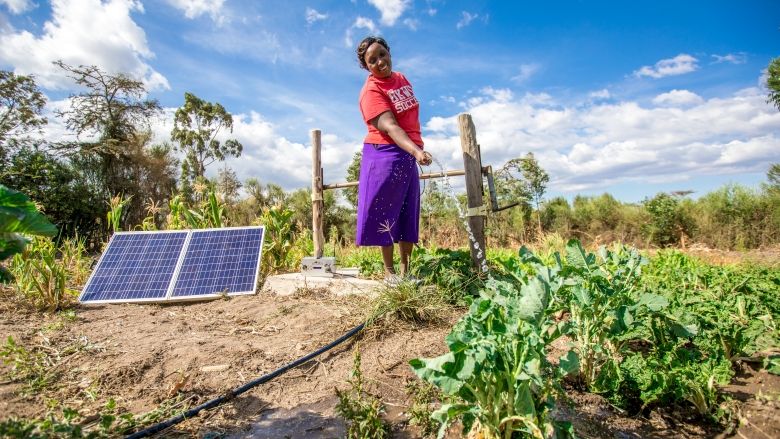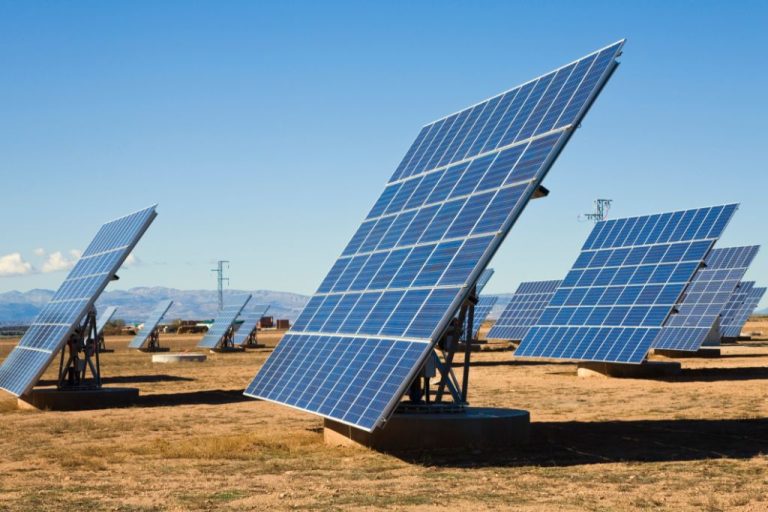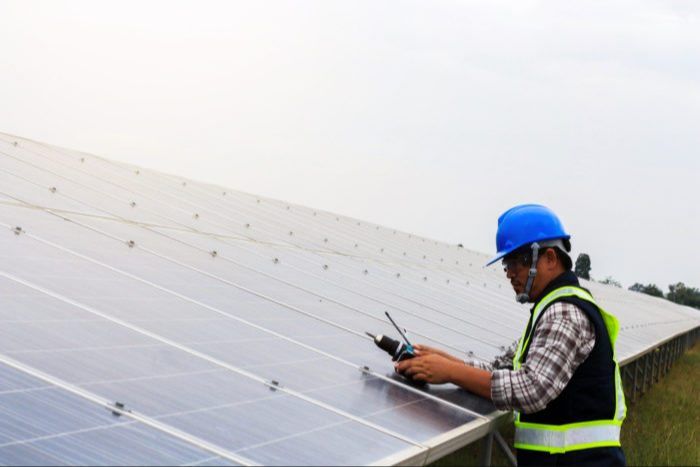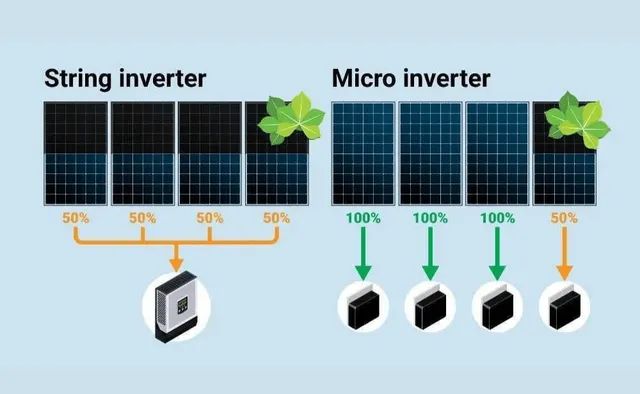How Big Is The Solar Market In Kenya?
Kenya is one of the fastest growing economies in Sub-Saharan Africa, with annual GDP growth averaging over 5% over the past decade. However, only about 70% of Kenyans have access to electricity. The country still relies heavily on hydropower, which accounts for over 50% of electricity generation. But droughts have led to power shortages and blackouts.
To meet rising energy demand, reduce reliance on hydropower, and provide affordable electricity access across the country, Kenya is turning to solar power. With average solar irradiance of 4-6 kWh per square meter and over 320 days of sun per year, Kenya has tremendous potential for solar power generation. But what is the current state of the solar power market in Kenya? How much progress has been made, and what key developments and projects are underway? This article provides an overview of the growth of solar power in Kenya.
Current State of Solar Power in Kenya
Kenya has made significant progress in expanding solar power over the last decade, but there is still substantial room for growth. Currently, solar accounts for about 1% of the total installed electricity capacity in Kenya. Approximately 20-25% of the population has access to solar lighting products or solar home systems. The total installed solar PV capacity is around 100 MW, having grown from just 3 MW in 2010. Solar is mainly deployed in rural areas to provide electricity access to underserved households and businesses. The cost of solar panels in Kenya has declined by over 60% in the last 5 years due to improving technology and economies of scale globally. The government has introduced several policies and programs to incentivize solar adoption, such as import duty waivers, VAT exemptions, net metering schemes and targets for renewable energy capacity. But barriers like high upfront costs of solar systems, lack of access to financing and low electricity tariffs have constrained even faster growth of the solar market.
Solar Potential in Kenya
Kenya is located along the equator and receives abundant sunlight year-round, with average solar irradiation of 4-6 kWh/m2 per day. This makes solar power an ideal renewable energy source for the country. Kenya has tremendous potential to expand electricity access through solar, especially in rural and remote areas.
Currently only about 60% of Kenyans have access to electricity. But Kenya aims to achieve universal electrification by 2022. Solar presents a clean, cost-effective way to provide electricity to unelectrified and remote areas. Solar systems can be deployed faster than extending the national grid to every home and village.
Solar power brings many benefits for off-grid regions in Kenya. It can provide basic electricity for lighting and powering appliances. Solar can be used for pumping water, irrigation, and productive uses like powering machinery and equipment. Solar mini-grids allow entire remote villages to gain access to reliable electricity. Overall, solar energy can significantly improve quality of life and enable economic development in rural areas currently lacking electrical infrastructure.
Key Solar Power Projects
Kenya has several major solar parks and farms that have been built in recent years. The largest is the Garissa solar power plant, which opened in 2019. This 55 MW solar farm was funded by several international organizations and provides power to northeastern Kenya.
There are also sizable solar parks in Eldosol (40 MW), Radiant (40 MW), and Alten Malindi (40 MW). Additional large-scale projects are in development, including the proposed Lake Turkana solar power plant, which is expected to produce 300 MW when completed.
For rural electrification, Kenya has used solar power for microgrids and home installations across the country. Notable projects include the World Bank-funded Kenya Off-Grid Solar Access Project, which aims to provide solar power to 14,000 households, hospitals, and schools in 14 underserved counties.
International investors and development partners have supported many major solar initiatives in Kenya. For example, the Garissa solar plant was funded by the European Union, DFID, the Climate Investment Fund, and other organizations. China has also invested in Kenyan solar farms as part of its Belt and Road Initiative.
Challenges for Solar Adoption
While solar power holds great potential for Kenya, there are still some key challenges that need to be addressed for wider adoption across the country. Some of the main challenges include:
Upfront Costs and Financing Limitations: The high upfront costs of purchasing and installing solar systems can deter adoption, especially for lower income households. Financing options are still limited, making it difficult for consumers to spread out payments over time.
Intermittent Power Supply: Solar power relies on sunny weather and daylight hours to generate electricity. Cloudy periods and nighttime can limit the consistent supply of solar power.

Lack of Infrastructure in Rural Areas: Much of Kenya’s rural population lacks access to electricity grids. The lack of infrastructure makes it harder to distribute solar power to more remote regions.
Need for Battery Storage: Solar energy needs to be stored in batteries for use at night. The additional costs of batteries and lack of access can constrain adoption.
Government Policy
The Kenyan government has set ambitious targets for renewable energy, aiming for 100% renewable energy access by 2030. This is outlined in the updated National Energy and Petroleum Policy from 2018, which has spurred several government initiatives to expand solar power access and adoption.
A key policy is feed-in tariffs for solar power, which were introduced in 2008. This provides an incentive for private investment in solar by guaranteeing a fixed price per kWh for power fed into the grid over 20 years. The feed-in tariff rate has declined over time as solar costs have fallen, but remains a supportive policy.
The government has also provided tax incentives for solar equipment and panels, including removing import duties and value-added tax. This aims to reduce costs and encourage solar uptake by households and businesses.
Net metering regulations are also in place, enabling consumers with solar panels to sell excess power back to the grid. This further enhances the financial case for going solar.
Alongside policy incentives, government initiatives like the Kenya Off-Grid Solar Access Project are expanding solar access in rural areas. The government is also upgrading the grid and distribution infrastructure to handle rising renewable energy capacity.
Private Sector
The private sector is playing a major role in solar adoption in Kenya through innovative companies providing products, services and financing models to make solar affordable and accessible across the country.
Some of the leading solar companies in Kenya include M-Kopa, d.light, Mobisol, Azuri Technologies, Greenlight Planet, and Pawame. These companies have pioneered pay-as-you-go financing models that allow customers to pay small amounts over time through mobile money to purchase solar home systems.
M-Kopa is the market leader having connected over 750,000 homes to solar power. They provide an integrated system with solar panel, battery, radio, torch and phone charging. Customers make a small deposit and then pay daily instalments over a year to own the system.
Many solar companies are utilizing mobile money platforms like M-Pesa which has high penetration in Kenya to facilitate micropayments. The pay-as-you-go model removes high upfront costs as a barrier to solar adoption.
Mini-grid operators like Powerhive and PowerGen are building solar mini-grids in rural areas to provide power to communities. They generate revenue through electricity sales to customers. Some mini-grid companies have also utilized pay-as-you-go instalment models.
Solar companies have attracted significant investment and funding in Kenya. Organizations like Acumen Fund, SunFunder and Deutsche Bank have provided debt financing to support solar companies growth. Venture capital firms like Novastar Ventures and Generation Investment Management have also invested in emerging solar startups.
The innovative private sector business models are driving rapid adoption of solar power across Kenya and bringing clean, reliable electricity to more households and businesses.
Case Studies
The rural village of Namanga in southern Kenya did not have access to electricity until a solar microgrid was installed in 2016. Funded by the African Development Bank, this off-grid solar project brought power to over 2,500 households, enabling new opportunities for business, education and healthcare.
“Before the solar microgrid, we had no electricity and had to use kerosene lamps. Now with lights we can keep our business open after dark. My children can also study at night which helps them in school,” said Paul Musumba, a local shopkeeper.
In the agricultural district of Makueni, a 50 kW solar mini-grid was developed by PowerGen Renewable Energy in partnership with the surrounding community. This project provides reliable electricity to over 200 households, improving quality of life.
“Our solar mini-grid means we can store crops safely and pump water for our livestock. My children can do their homework at night under an electric light. Solar power has been life-changing for us,” remarked Amina Kioso, a mother of four.
Safaricom, Kenya’s largest telecom company, installed a solar array at its headquarters capable of generating 1.7 MW. This solar installation covers 25% of the facility’s power needs, reducing grid dependence and demonstrating corporate sustainability.
“By using solar energy, we lower our carbon footprint and protect the incredible environment here in Kenya that our customers experience every day,” noted Peter Ndegwa, CEO of Safaricom.
Future Outlook
The future of solar power in Kenya looks bright according to projections from industry analysts. Kenya aims to generate 100% of its energy from renewable sources by 2050 under its Vision 2030 plan. Solar, along with geothermal and wind, will play a major role in achieving this goal.
Solar costs are expected to continue falling dramatically in the coming years, making it more affordable and attractive for widespread adoption. Analysts predict utility-scale solar electricity prices could decrease by as much as 60% by 2025 compared to 2020 costs. Solar home systems and small commercial installations are also projected to become cheaper.
The government plans to introduce additional policy incentives to accelerate growth. These include new renewable energy feed-in tariffs, tax rebates, import duty waivers, and renewable energy certificates. Streamlining the permitting and land acquisition process for new solar farms is another priority.
If solar continues on its current adoption path, analysts estimate it could provide 20-30% of Kenya’s electricity mix by 2030. This would require significant investment in new solar capacity and storage solutions to integrate rising shares of intermittent solar generation. Overall, the future is bright for solar to power more of Kenya’s homes, businesses, and national grid.
Conclusion
In summary, the solar market in Kenya has enormous potential for growth due to the country’s optimal solar resources and increasing energy demand. However, the market remains largely untapped, with solar accounting for less than 1% of installed capacity. Key factors driving solar adoption include government policy incentives, international development funding, decreasing technology costs, and an active private sector. Notable projects demonstrate the viability of large-scale solar farms, mini-grids for remote areas, and solar home systems. Challenges inhibiting faster solar scale-up include financing constraints, gaps in regulation and policy implementation, lack of infrastructure, and insufficient technical capacity. While the future outlook is positive overall, targeted policy and regulatory reforms, innovative business models, and strategic investments will be critical to unlocking Kenya’s massive solar resources. The development of the solar sector can significantly expand energy access, create jobs, reduce reliance on fossil fuel imports, and support Kenya’s climate change mitigation efforts. But realizing these benefits will require coordinated efforts between policymakers, development partners, investors, and the private sector. The time is now for Kenya to ramp up solar adoption and establish itself as an African leader in clean energy.






